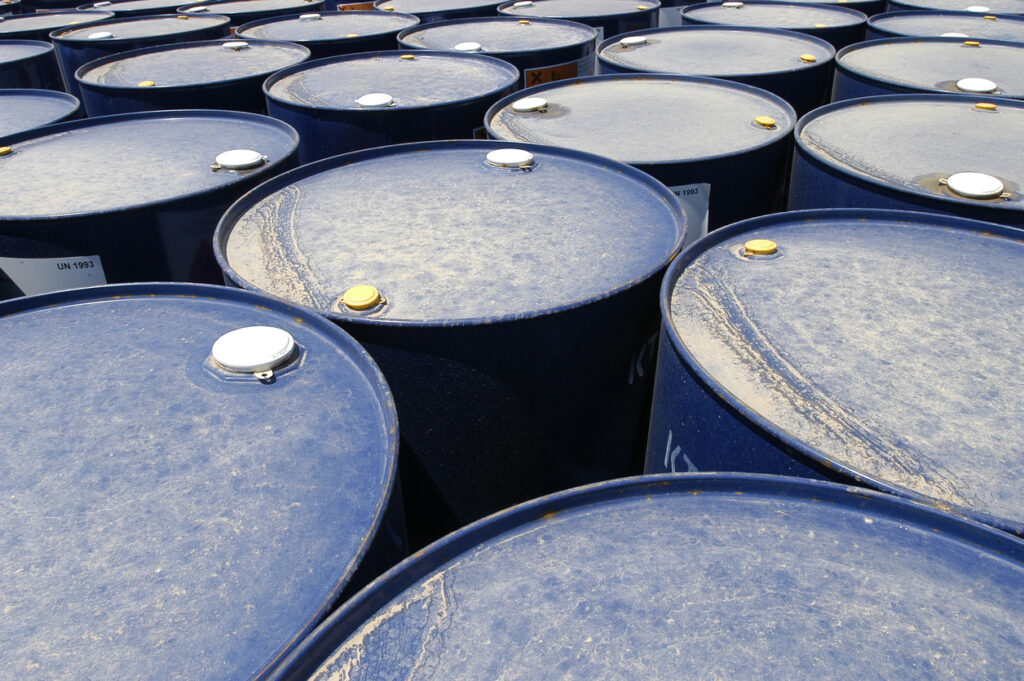Managing the Byproduct That Now Constrains U.S. Shale Growth
This article is a summarized and edited version of a piece originally written by Pat Patton, published on Substack in August 2025.
The Cold War Backdrop
The 1990s opened with geopolitical upheaval. The Soviet Union—whose oil output peaked at ~12–12.6 million barrels per day in 1987–88—was slipping into crisis. Oil prices had fallen from early-1980s highs, and declining revenues starved the Soviet economy, hastening collapse.
Meanwhile, U.S. dependence on foreign oil was climbing. Imports accounted for ~42% of total U.S. consumption by 1990, much of it from politically unstable regions. In August 1990, Iraq’s invasion of Kuwait sent prices surging—roughly doubling between July and October—a vivid reminder that American prosperity was tied to distant supply lines and unpredictable regimes.
President George H. W. Bush put it bluntly in his 1991 State of the Union address:
“We are … a long way from total energy independence. Our imports of foreign oil have been climbing steadily since 1985 and now stand at 42% of our total consumption. Too many of those oil imports come from sources in troubled parts of the world.”
At the time, U.S. domestic production was in decline. “Energy independence” was a political slogan more than an achievable goal. That equation changed with shale.
The Shale Revolution
Hydraulic fracturing had existed for decades, but when paired with horizontal drilling in the early 2000s, it unlocked shale and tight formations once considered uneconomic. The revolution began in North Texas’s Barnett Shale and soon spread to the Bakken, Eagle Ford, Appalachia, and ultimately the Permian Basin.
Operators pushed technical boundaries: longer laterals, higher proppant loads, and water-intensive completions. Productivity improved, breakeven costs fell, and by 2009 the U.S. had become the world’s largest producer of natural gas. By 2018, it held the top spot in crude oil production as well.
The global market felt the shock. In 2014, OPEC—led by Saudi Arabia—chose not to cut production as U.S. shale volumes surged. Instead, it defended market share. Prices tumbled from ~$100/bbl in mid-2014 to below $30/bbl by early 2016. Dozens of U.S. operators declared bankruptcy, but the sector did not collapse. Companies slashed costs, streamlined designs, and drove down breakevens.
The outcome was telling: in 2015 Saudi Arabia recorded a ~$98 billion budget deficit (≈15% of GDP), financed with reserve drawdowns and borrowing. In 2016 the deficit narrowed to ~$79 billion (≈13% of GDP). Riyadh launched subsidy reforms and Vision 2030 to diversify away from oil dependency. U.S. shale, meanwhile, emerged leaner and more competitive.
Shale did not free the U.S. from global oil prices, but it did reshape the balance of power. America could no longer be dismissed as an import-dependent hostage to OPEC. It had become a central actor in global supply.
Yet independence created new dependencies. Chief among them: water.
Water: From Byproduct to Bottleneck
Every shale well requires millions of gallons of water to complete, and each barrel of oil yields multiple barrels of produced water in return. In the Permian Basin—the cornerstone of U.S. production—this reality has turned water into a systemic constraint.
Today, the basin generates ~20–22 million barrels of produced water per day, a water-to-oil ratio averaging about 3:1 and climbing. Like oil and gas, water needs takeaway capacity; unlike hydrocarbons, it has no natural market. Produced water is treated as a liability—transported, stored, and ultimately injected into disposal wells.
Injection, once abundant, is hitting limits. Regulatory seismic-response areas in Texas and New Mexico have restricted deep disposal, shifting volumes into shallower formations or recycling streams. Without sustainable water management, oil production stalls.
Beyond Waste: Potential Resource
Produced water is chemically complex—laden with salts, hydrocarbons, metals, organics, and naturally occurring radioactivity. That makes large-scale reuse outside the oilfield difficult and costly. Still, progress is being made:
- Recycling in completions. Many Permian operators now recycle >50% of produced water directly back into new fracs, reducing reliance on freshwater.
- Water midstream build-out. Companies are developing large pipeline networks and treatment hubs to move and reuse volumes more efficiently.
- Pilot projects. Universities, regulators, and industry groups are testing whether advanced treatment could make produced water usable for agriculture, aquifer recharge, or industrial demand in arid regions.
For now, economics favor disposal at ~$0.60–$0.70/bbl over full desalination. But regulatory limits on injection and community water pressures are shifting the calculus.
Shared Pore Space, Shared Responsibility
Hydrocarbon reservoirs and disposal zones cross lease lines. Every barrel injected raises formation pressure across operators, fields, and counties. That interconnection is forcing a shift:
- Data sharing among operators and regulators on injection volumes and pressures.
- Regional coordination to manage induced seismicity.
- Collaborative infrastructure between producers and midstream water specialists.
In a sector long defined by fierce competition, water is creating new incentives for cooperation.
Water as the New Energy Security Frontier
Energy security evolves with each era. In the Cold War, it meant dependence on OPEC and Middle Eastern choke points. In the shale era, it meant unlocking domestic reserves.
Now, the frontier is water. The Permian is the linchpin of global supply growth; its water constraints have global consequences—affecting crude prices, the Strategic Petroleum Reserve, and allies who depend on U.S. exports.
Managing produced water is no longer a regional inconvenience. It is a national security issue.
The shale revolution proved that American ingenuity can solve what once seemed impossible. Sustaining it will require a new form of ingenuity—collaboration across operators, regulators, and technology providers.
The shale era was built on fracturing rock. Its future will depend on managing the water that flows back.
Sources
- Energy Institute / BP Statistical Review of World Energy
- EIA, Today in Energy; DOE announcements (2018)
- RBN Energy, Permian Produced Water Series (2021–2024)
- B3 Insight, Annual Produced Water Forecast

